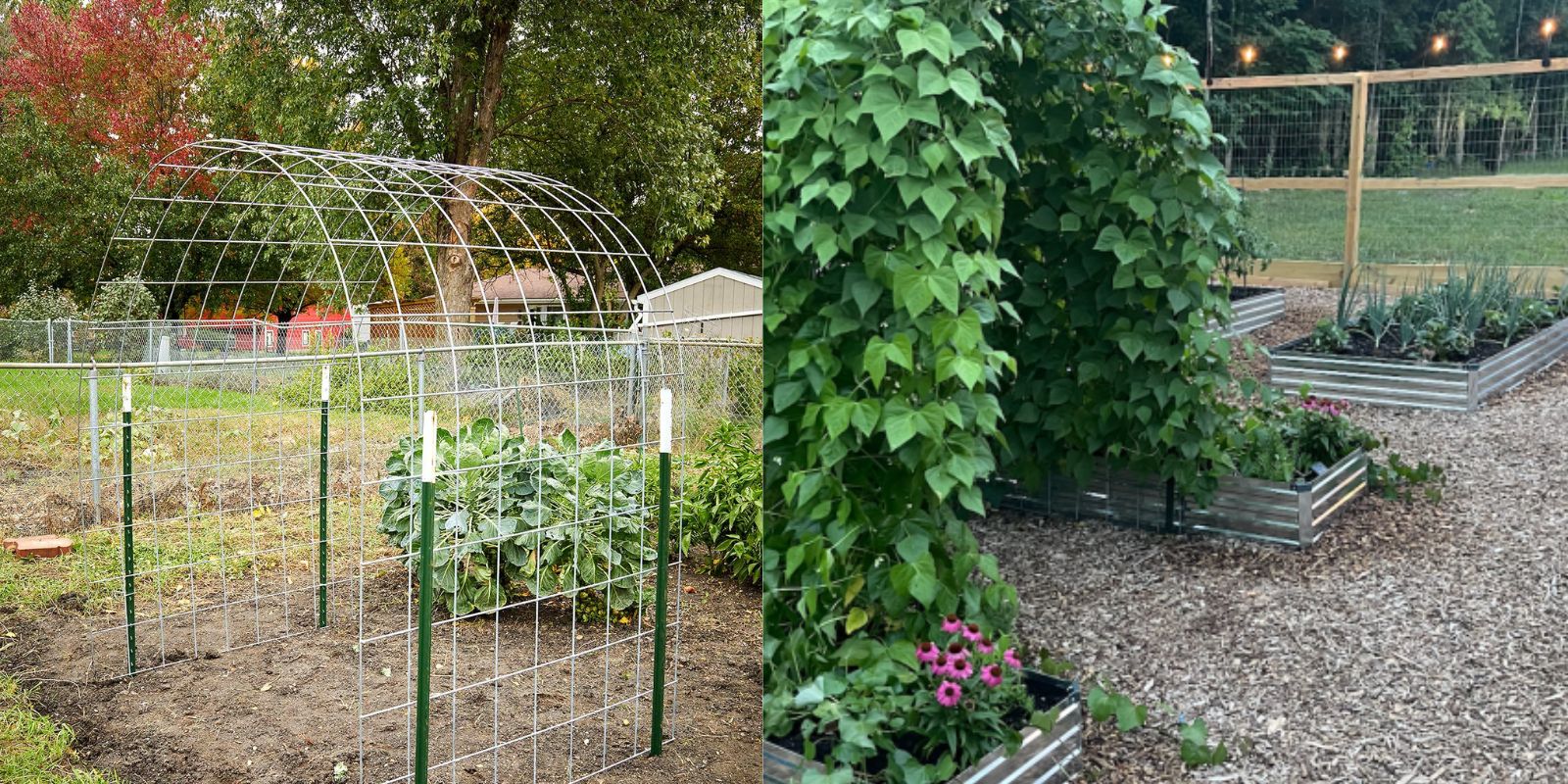Green beans are a staple in many gardens, cherished for their crisp texture and delightful flavor. When grown on a trellis, green beans not only save space but also yield a more abundant and accessible harvest. This comprehensive guide will walk you through the process of growing green beans on a trellis, from selecting the right materials to enjoying the fruits of your labor.
Introduction
Growing green beans on a trellis is an innovative gardening technique that maximizes space and enhances the efficiency of your garden. This method is particularly beneficial for those with limited garden space or those looking to improve the aesthetics of their garden. By training green beans to climb a trellis, you can create a vertical garden that is both functional and visually appealing. This guide will provide you with all the information you need to successfully grow green beans on a trellis, ensuring a bountiful harvest and a vibrant garden.
Benefits of Growing Green Beans on a Trellis
- Space Efficiency: Trellises allow you to grow plants vertically, which is ideal for small gardens or urban spaces where horizontal space is limited.
- Improved Air Circulation: Elevating your green beans off the ground helps improve air circulation around the plants, reducing the risk of disease and pest infestations.
- Easier Harvesting: Green beans growing on a trellis are easier to reach and harvest, minimizing the need for bending or kneeling.
- Enhanced Growth: Climbing beans often produce more beans per plant compared to bush varieties due to better light exposure and less competition for nutrients.
Materials Needed
- Trellis: Choose a sturdy trellis made from wood, bamboo, metal, or a combination of materials. The trellis should be at least 5-6 feet tall to support the climbing green beans.
- Green Bean Seeds: Select a variety suited to your climate and garden conditions. Common varieties include bush beans and pole beans, with pole beans being the ideal choice for trellises.
- Soil: Use well-drained, nutrient-rich soil. A mixture of compost and garden soil works well.
- Compost or Fertilizer: Organic compost or balanced fertilizer to enrich the soil.
- Watering Can or Hose: For regular watering.
- Garden Tools: Trowel, gloves, and any other necessary tools for planting and maintenance.
Step-by-Step Guide
1. Choose and Prepare the Trellis
Select Your Trellis:
- The trellis should be at least 5-6 feet tall and sturdy enough to support the weight of the growing beans. Options include wooden stakes, bamboo poles, or metal frames. You can also create a DIY trellis using repurposed materials.
Install the Trellis:
- Place the trellis in your garden bed or container. Ensure it’s securely anchored to prevent tipping. For best results, position it in an area that receives full sun for at least 6-8 hours a day.
2. Prepare the Soil
Soil Preparation:
- Green beans thrive in well-drained, loamy soil. Before planting, enrich the soil with compost or aged manure to improve fertility and drainage. Aim for a soil pH between 6.0 and 7.0.
Soil Preparation Tips:
- Loosen the soil to a depth of at least 12 inches to ensure adequate root growth.
- Remove any weeds or debris that might compete with your green beans for nutrients.
3. Plant the Green Beans
Sowing the Seeds:
- Plant green bean seeds directly into the soil about 1 inch apart and 1-2 inches deep. If planting multiple rows, space the rows about 12-18 inches apart.
Planting Tips:
- Soak the seeds in water for a few hours before planting to improve germination.
- If you’re in a cooler climate, start seeds indoors and transplant seedlings outdoors after the last frost date.
4. Train the Green Beans
Guiding the Vines:
- As the green beans begin to grow, gently guide the vines towards the trellis. Green beans will naturally climb, but you may need to assist them initially.
Training Tips:
- Use soft ties or garden twine to secure the vines to the trellis if needed. Avoid using materials that could damage the plant stems.
5. Water and Fertilize
Watering:
- Keep the soil consistently moist but not waterlogged. Green beans prefer regular watering, especially during dry periods. Aim for deep, infrequent watering to encourage strong root growth.
Fertilizing:
- Apply a balanced fertilizer or additional compost every 4-6 weeks to support healthy growth and bean production. Avoid over-fertilizing, as excessive nitrogen can lead to lush foliage at the expense of bean production.
6. Monitor for Pests and Diseases
Pest Control:
- Regularly check your plants for common pests such as aphids, spider mites, and bean beetles. Use organic pest control methods or insecticidal soap to address infestations.
Disease Prevention:
- Ensure good air circulation around the plants to reduce the risk of fungal diseases. Remove any affected leaves or plants promptly to prevent spread.
7. Harvesting the Beans
When to Harvest:
- Harvest green beans when they are firm, crisp, and about 4-6 inches long. Beans should snap easily when bent. Pick them regularly to encourage continuous production.
Harvesting Tips:
- Use garden scissors or pruning shears to cut the beans from the plant to avoid damaging the vines.
- If you notice any beans beginning to dry out, collect and store them for future use or replanting.
Conclusion
Growing green beans on a trellis is a rewarding gardening technique that offers numerous benefits, from maximizing space to improving plant health and accessibility. By following the steps outlined in this guide, you can successfully cultivate a thriving green bean garden that not only enhances your outdoor space but also provides a delicious harvest.
Call to Action
Ready to transform your garden with a green bean trellis? Gather your materials, set up your trellis, and start planting today. Enjoy the process and the delicious rewards of your efforts! 🌱🌟 #GreenBeans #VerticalGardening #UrbanFarming #GardenInspiration #GrowYourOwn #HarvestJoy #PlantLife #SpaceSaver #GardenGoals

